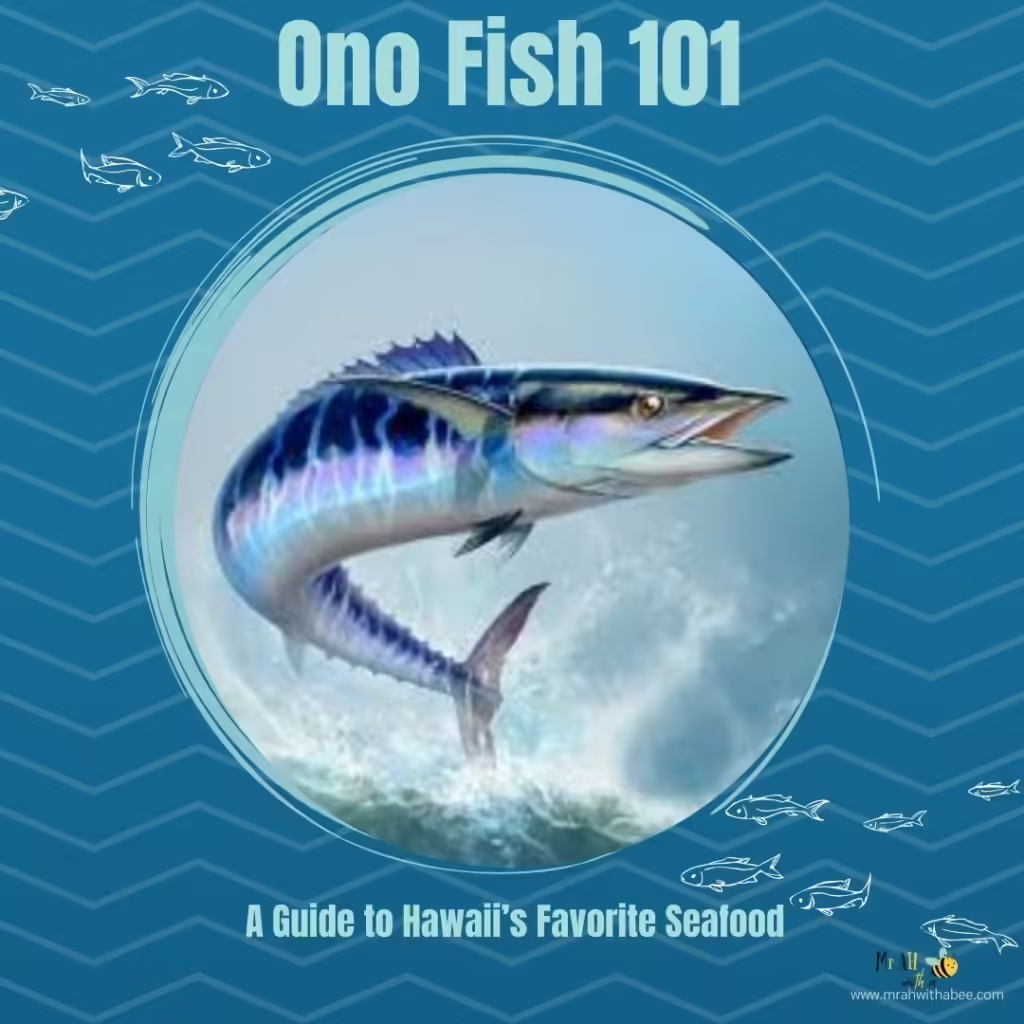What is Ono Fish?
Habitat and Distribution
Usually found near coastlines, reefs, and ledges. Ono fish thrive in warm, tropical, and subtropical waters. Their distribution is extensive, spanning the Pacific, Atlantic, and Indian Oceans. They are a famous catch for both commercial and recreational fishermen, especially in the waters around Hawaii, the Caribbean, and parts of Central America.
Diet and Feeding Habits
With a diverse diet that includes small fish, squids, and crustaceans, Ono fish are carnivorous hunters. Their diet consists of approximately 84.64% native fish, 14.26% cephalopods (such as cuttlefish), and 1.1% crustaceans. Known for their striking speed, they depend on swift bursts of energy to catch their prey. This power enables them to outpace other fish in open waters, making them highly effective predators. Their diet consists of approximately 84.64% native fish, 14.26% cephalopods (such as cuttlefish), and 1.1% crustaceans.
Their sharp sense of sight plays a key role in their hunting techniques, enabling them to spot potential meals from a distance. Ono fish can detect movement and changes in their environment because their eyes adapt to various light conditions. This ability helps them locate prey even in deeper waters. Ono fish can quickly and effectively tear through prey with their sharp teeth. This adaptation allows them to consume crustaceans with ease and also assists them in catching smaller fish and squids. Their hunting skills and diet make them strong competitors in the marine ecosystem, prized by commercial and recreational fishermen.
The Cultural and Culinary Significance
Ono holds a special place in Hawaiian cuisine, where it is prized for its mild flavor and lean, firm texture. European explorers who initially mapped the Hawaiian Islands found that Ono fish were plentiful around Oahu. Historical maps often spelled “Oahu” as “Wahoo,” and researchers believe this spelling inspired the fish’s alternative name. This connection highlights the cultural and historical significance of Ono fish in the region, reflecting its long-standing presence in Hawaiian waters.
Culinary Significance
1. Cooking Methods
- Grilled: Lightly marinate the fish beforehand for added taste. Grilling Ono brings out its natural flavors while adding a delicious smoky char.
- Broiled: A simple seasoning of salt, pepper, and lemon works well. Broiling is a great way to cook Ono quickly, allowing the exterior to caramelize while keeping the inside moist.
- Blackened: This method involves seasoning the fish with a blend of spices and cooking it in a hot skillet. The blackened crust adds a strong flavor that complements the fish’s natural taste.
- Sautéed: Sautéing Ono in a bit of oil or butter allows for a quick and flavorful preparation. Pair it with vegetables for a complete dish.
- Poached: Cooking it gently in a flavorful broth or wine keeps the flesh tender and juicy. Poaching is ideal for preserving moisture in lean fish like Ono.
- Tempura: This Japanese method involves battering and deep-frying the fish, resulting in a light and crispy exterior. Tempura Ono is a delightful way to enjoy this fish with a unique texture.
2. Versatility of Cooking Methods
The shelf life of fresh Ono is relatively short, making it essential to handle and store it properly. To maintain its freshness, you should keep Ono on ice or refrigerate it immediately after catching it. Ideally, consume it within a couple of days to ensure the best texture and flavor. For longer storage, consider freezing the fish, but be mindful that this may affect its quality.
Fishing and Sustainability
Health Benefits
Ono fish is a nutritious choice, packed with essential nutrients. It’s a great source of lean protein, low in fat, and rich in vitamins B6 and B12, which support energy levels and brain health. Ono also provides omega-3 fatty acids, known to promote heart health and reduce inflammation. Hawaii wahoo is an excellent source of healthy, extra-lean protein. It is low in saturated fat and sodium while being rich in niacin, vitamin B6, vitamin B12, phosphorus, and selenium. Additionally, a 4-ounce serving of fresh Hawaii wahoo provides approximately 375 mg of omega-3 fatty acids (DHA and EPA).
Ono fish is a remarkable species, valued for its taste and nutritional benefits. From its habitat in warm ocean waters to its significance in Hawaiian cuisine, Ono plays a unique role in both nature and culture. Whether enjoyed grilled, seared, or in a poke, Ono fish is a delicious and nutritious addition to any meal.
FAQs
What is Ono fish also known as?
People commonly refer to Ono fish as wahoo.
Where can Ono fish be found?
Fishermen find Ono fish in warm, tropical, and subtropical ocean waters, particularly near Hawaii and the Caribbean.
How is Ono fish typically cooked?
Is Ono fish sustainably fished?
Yes, but regulations help manage fishing practices to ensure that populations remain healthy.
Thanks for reading, for more interesting articles visit our homepage.



